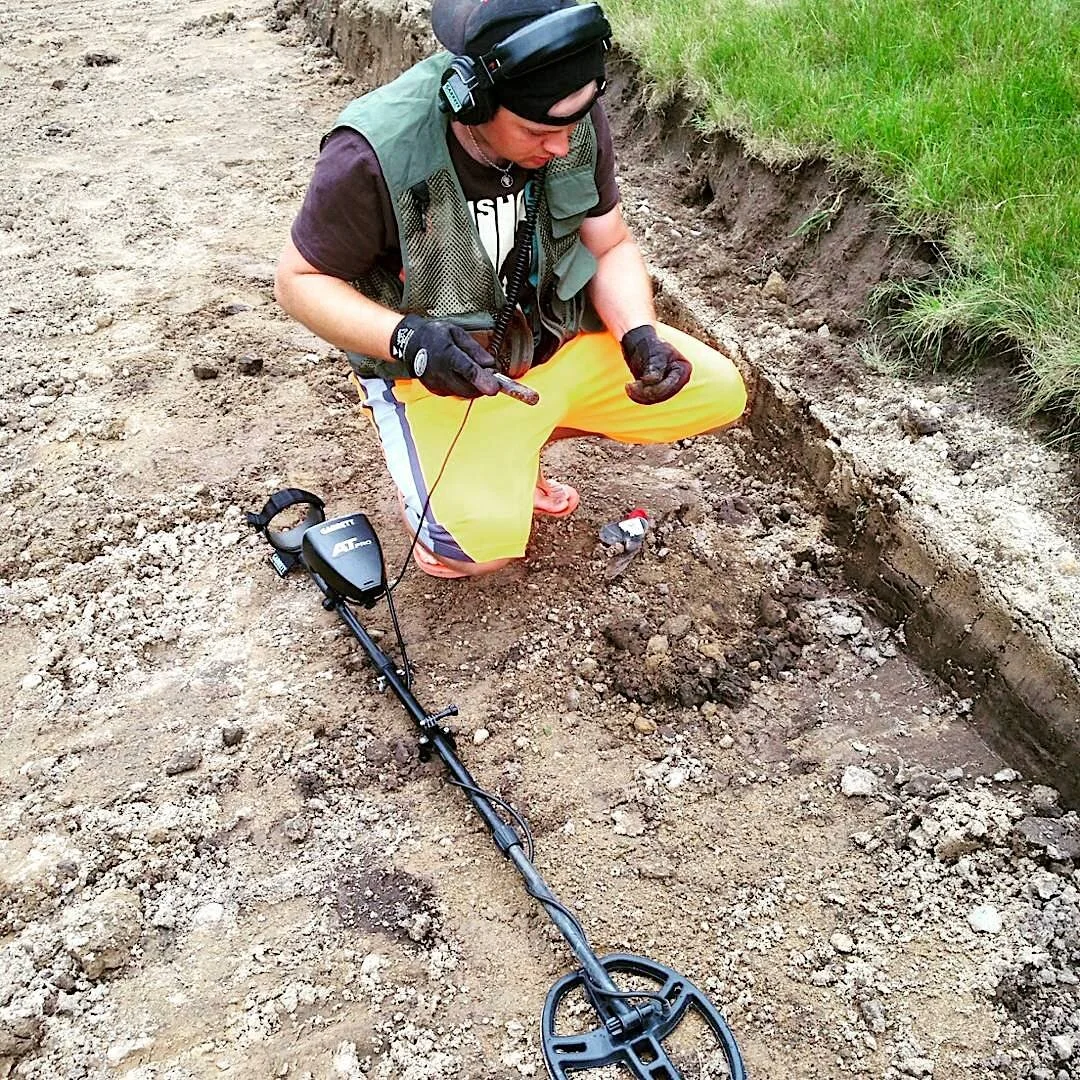Metal Detecting - Cut The Perfect Plug While Digging
Cutting a perfect plug will help you recover your target faster as well as leave a minimal trace of digging or damage to a lawn so that no one would even know you had dug a hole there. In this article, I’ll take you through the step by step process on how to cut the perfect plug while metal detecting as you dig for your treasure.
**DISCLAIMER - As an Amazon Associate I earn from qualifying purchases. The links in the article are affiliate links that help support this blog and my channels. Metal Detecting Life is supported by you, the readers! When you purchase something I recommend via my links, I may get an affiliate commission (terms of service) — but it never affects the price you pay. Cheers!
If you metal detect, then you might be wondering, “what is a plug?” A plug is the small piece of sod/earth that you cut in the ground so that you can then open up a hole below.
If you’re being a good steward to the hobby of metal detecting, it is important to know how to properly dig and recover your treasures so that you minimize the impact to the environment and any damage to the lawn you are searching.
How to Cut the Perfect Plug
Using a lesche digging tool is a great option for cutting a clean plug.
Take Your Time
Taking a little extra time and care to retrieve your targets, especially from grassy areas, can pay dividends for you in the end. The end goals here are simple:
1) Keep the lawn looking pristine, just as if you were never there.
2) Don’t scratch your find, especially if it turns out to be the elusive and very valuable 1916 D Mercury Dime.
Regardless if you are digging at your own house, a neighbors, a school yard, or in a public park, it is important to cut the cleanest plug possible and then replace it so there are no open holes left throughout the area. Think of it as “leaving it better than when you got there” because you are removing for the most part… trash!
Locate Center of Target
Marking the center of where you pin-pointed your target will help you to not damage your find when cutting your plug.
Whether you use a lesche digger or a Grave Digger shovel (to keep you from bending over while digging), both can be found on my recommended gear page, you’ll want to make sure that once you pinpoint your target using your detector, that you then begin cutting a 3-4 inch radius around the center of where you pinpointed your target.
Grave Digger 36" Nemesis T-Handle Shovel
Made in the USA, this laser-cut, hand-welded, Nemesis shovel is powder-coated and heat-treated. These blades are CNC machine-sharpened, so use caution while you're using it. The edges are sharp and were designed specifically for metal detecting enthusiasts! SAVE 10% OFF YOUR ORDER WITH CODE - SWING4THERING
Lesche Digging Tool with Sheath
This heavy duty digger will break through most soils and even small roots to retrieve your treasure. The Lesche digging tool has a comfortable rubber grip handle with hand guard plate. The hand guard plate is to protect your hand from sliding down on the digging part of the tool. One side of the blade has serrated teeth to help cut through thick grass and roots.
By giving yourself a perimeter, you are minimizing the chances of scratching the target as you begin to cut your plug. You may want to mark the center before you cut to insure you don’t cut too closely to where you pinpointed with your detector so as not to scratch your find as you begin digging.
Begin The Cut
Cutting a circular plug can help keep a cleaner looking lawn when replacing it because there are no distinct vertical or horizontal lines and therefore, blends in to it’s surroundings better.
As you begin to cut your plug, do so in a circular shape to help maintain your radius from the center of your target.
Once you’ve cut three-quarters of the way around the radius of your target, this will allow you to pop the plug and you’ll be able to flip it over so that you’ve opened the hole, leaving a “hinge” of dirt and grass still connected to the ground.
Doing this will make replacing the plug and clean up much easier once you’ve retrieved your target.
Grave Digger Sidekick
This laser-cut, hand-welded shovel is powder-coated and heat-treated. It's a total of 12" long with a 7" long blade, which measures 2 inches across. It features a rubber handle that's tapered for a great grip.
These shovels measure a 50 on the Rockwell scale, which is a scale that describes the hardness of a metal. That translates to ultimate durability, excellent longevity, and superior ground penetration.
SAVE 10% OFF YOUR ORDER WITH CODE “SWING4THERING”
Make sure to cut down 4-5 inches in to the soil even if your detector said the target was only 3 inches deep.
By cutting a little deeper, you’re cutting past the roots for the grass and doing this will help keep the lawn looking green and pristine once you replace the plug because you didn’t damage the roots and the grass can continue to grow.
Pinpoint Your Target
Pinpointers like the Garrett Pro Pointer AT, which I use, can help make for a speedy recovery and keep you from damaging your find.
Now that your plug has been cut and the hole is open, it’s time to get out the handheld pinpointer and begin the careful excavation of your target.
Doing this can help you zero in on exactly where the target is and you can carefully dig to pop it up from its location.
Don’t forget to check the bottom of the plug that you just cut as the target can sometimes still be in the clog of dirt you just flipped over depending on how far you cut down.
Keep It Clean
Using a towel for excess dirt can also make turf clean up even easier once you’ve recovered your target.
If you need to remove extra dirt from the hole, putting a small towel down next to the plug can be useful to keep the area around the hole clean and once you’ve recovered the target, you can simply pick the towel up and empty the dirt back in to the hole, thus keeping the surrounding grass clean.
Behold, your new treasure birthed from the Earth! Cherish it forever, but don’t forget to repair the plug where it came from.
You never know what relics await you underneath the plug. I dug this police pin in a Chicago park.
Repairing Your Plug
Ta-da! It’s like we were never there!
Once you’ve replace any dirt you removed from the hole using the towel method as stated above, then flip the plug back over and into the hole, matching the edges up the best you can.
Pat the plug down so that everything is firm once again and press the edges of the plug in to the side wall from where you cut, this helps prevent the plug from drying out and will keep the plug more stable should someone run across it.
Bonus Tips
Photo Credit: Tom Woodward - Flickr
If you carry an extra bottle of water with you, sprinkle a little around the edges of the plug cut line after replacing it to help insure the roots don’t dry out.
Try not to detect or dig pristine lawns or sport fields on hot, dry days, especially if the weather has been like that for consecutive days as the grass is certainly stressed and digging could shock the root system and cause the grass in the plug to die.
Do the grass and yourself a favor by detecting the beaches or in the water on those hot, sweltering days!
Summary
Now that you know the art of cutting the perfect plug for metal detecting, I encourage you to go out in to the wild and seek metal detecting greatness! Just remember to always practice being a good steward to the hobby so that everyone may continue to enjoy the benefits of metal detecting, especially when detecting in public places.
12 factory settings allow you to have so much flexibility while you are looking for treasure underground including waterproof up to 20m.
Whether you hunt at the beach for gold chains or prefer hunting for old coins and relics around homesteads, there is a setting that can help you with the XP Deus II.
If you have any further questions when it comes to digging the perfect plug, metal detecting, or you just want to talk treasure, then be sure to leave me a beep down below! Until then, keep “Swinging 4 The Ring!”





















